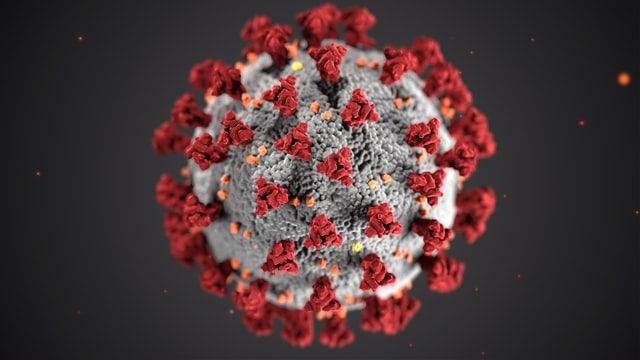This web page was produced as an assignment for an undergraduate course at Davidson College.
Quantitative analysis of plasma proteins reveals that functional differences amongst these plasma proteins enable the prediction of the COVID-19 disease severity.
The fatality rates are very high for people with severe COVID-19 compared to those with non-severe COVID-19. It is important to be able to detect whether patients have mild or severe COVID-19 earlier. The disease severity helps us predict the disease course. Knowing the disease severity can also inform decisions on how to better distribute intensive care resources and medical services to those who need them more (Park et al. 2020). Biomarkers are measurable indicators of the disease severity (Park et al. 2020). Distinct functional characteristics of plasma proteins between mild and severe COVID-19 patients can act as biomarkers for the disease state and severity (Park et al. 2020). Plasma proteins include globulins involved in the immune system, fibrinogens involved in the blood clotting process and albumins that regulate the osmotic pressure of the blood (Matthew et al. 2020). Mass spectrometry based studies to identify and quantify the proteins in an organism allow the quantification of plasma proteins in COVID-19 patients. Biomarkers of COVID-19 can also be used as therapeutic targets to treat patients with COVID-19.
Park et al. collected plasma samples from three mild and five severe COVID-19 patients. Mass spectrometry based analysis was used to identify 1639 proteins, 56 of which were quantifiable FDA-approved biomarkers. Researchers confirmed a clear separation between mild and severe COVID-19 plasma samples due to the differences in plasma proteins from either group of patients. Park et al, compared their findings with previous studies that used proteins to discover biomarkers for COVID-19. Shen et al, analyzed the proteins and metabolites in blood serum to identify biomarkers for COVID-19. Messner et al. also identified significant proteins that can be used to distinguish COVID-19 patients from the healthy control. Approximately 70% of the proteins identified by Park et al. correlated with those identified by Shen et al. and Messner et al. 7 proteins were differentially expressed between mild and severe plasma samples in both the Park et al. and Shen et al. studies and these may serve as reliable biomarkers for the COVID-19 disease state. Overall, Park et al. identified 77 new differentially expressed proteins between mild and severe COVID-19 patients.
Park et al. characterize the differentially expressed proteins in mild and severe COVID-19 patients to further explain the biological functions and signaling pathways in which this proteins are involved. Proteins that take part in neutrophil activity which involves patrolling the organism for infection and killing invading pathogens were significantly up-regulated in the severe COVID-19 patients. The presence of excess neutrophils in COVID-19 has been noted to cause a hyperinflammatory response that kills tissue and damages organs (Barnes et al. 2020). Proteins involved in blood coagulation were also significantly different between mild and severe COVID-19 patients. Park et al. observed reduced levels of fibrinogens in severe COVID-19 patients. They also report the upregulation of proteins involved in coagulation activation, and reduced numbers of cell fragments that help with blood clotting to stop bleeding (platelets) in severe COVID-19 patients. These findings led to the suggestion that severe COVID-19 patients may require anticoagulation drugs as a treatment strategy.
Park et al, effectively validate their findings using other studies that also present the use of protein identities and quantities (proteomics), to identify protein biomarkers for the presence and severity of COVID-19. The biomarkers identified in this paper are a good reference study of proteins to focus on for potential biomarkers and therapeutic targets. The small sample size (n=8) used in this study is not sufficient to base clinical decisions on differences amongst these proteins in COVID-19 patients. It is a well known fact is that age is an important factor affecting the disease severity of COVID-19. Park et al, in their paper did not account for the impact of age differences between mild and severe COVID-19 patients who were part of the study. Without accounting for age, there is no sufficient evidence that it is only the functional differences amongst proteins leading to either mild or severe COVID-19. It is understandable that at the time this study was undertaken, there may not have been as many infected people to be a part of the study. It is useful to undertake a replication of this study with larger sample sizes and accounting for the ages of patients. Results from such a study can help validate the biomarkers and therapeutic targets identified in this paper.
Tanatswa Muchenje is a Junior Biology major at Davidson College. Contact her at tamuchenje@davidson.edu.
References
- Messner, C. B., V. Demichev, D. Wendisch, F. Kurth, L. E. Sander et al., 2020. Ultra-high-throughput clinical proteomics reveals classifiers of COVID-19 infection. Cell syst. 11, 11 e14-24e14. https://doi.org/10.1016/j.cels.2020.05.012
- Shen, B., X. Yi, Y. Sun, H. Liu, H. Chen, et al 2020. Proteomic and metabolomic characterization of COVID-19 patient sera. Cell. 2020 182, 59 e15-72 e15. https://doi.org/10.1016/j.cell.2020.05.032
- Barnes, B. J., J. M. Adrover, A. Baxter-Stoltzfus, A. Borczuk, J. Cools-Lartigue et al., 2020. Targeting potential drivers of COVID-19: neutrophil extracellular traps. J. Exp. Med. 2020 https://doi.org/10.1084/jem.20200652
- Park, J., H. Kim, S. Y. Kim, Y. Kim, J. Lee et al., 2020. In depth blood proteome profiling analysis revealed distinct functional characteristics of plasma proteins between severe and non-severe COVID-19 patients. Sci rep 10, 22418. https://doi.org/10.1038/s41598-020-80120-8
- Rosales, C., 2018. Neutrophil: A Cell with Many Roles in Inflammation or Several Cell Types?. Front Physiol. 2018;9:113. https://doi.org/10.3389/fphys.2018.00113
- Matthew, J., P. Sankar, M. Varacallo, 2020. Physiology, Blood Plasma. StatPearls https://www.ncbi.nlm.nih.gov/books/NBK531504/
© Copyright 2020 Department of Biology, Davidson College, Davidson, NC 28036

